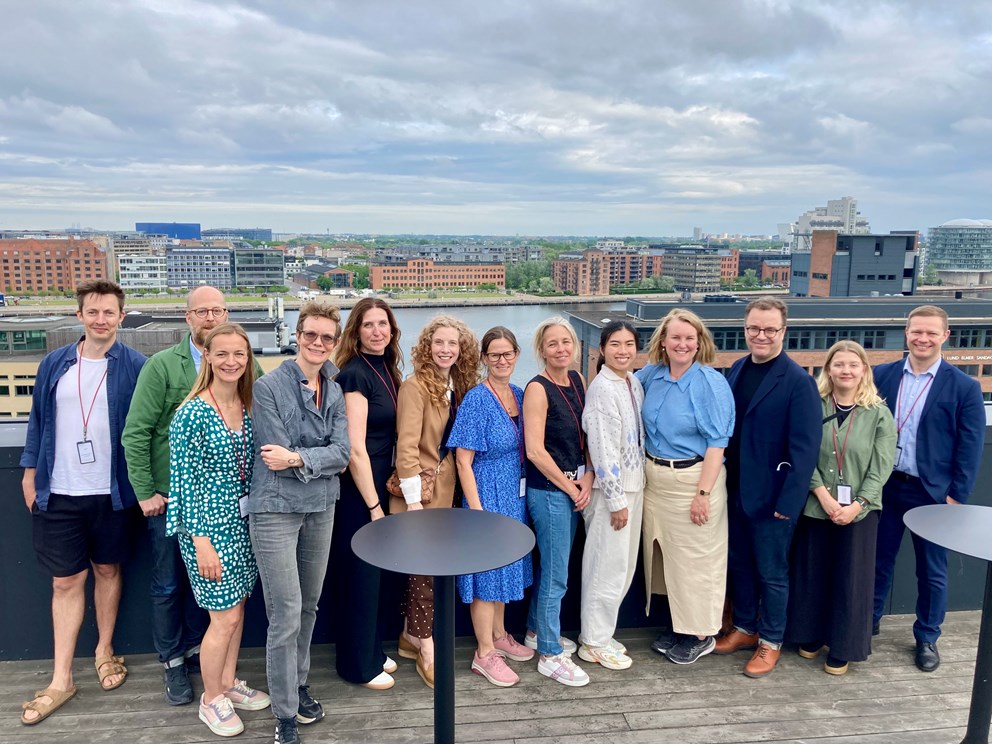Inspiring Site Visit: Transformation of KB32

The official programme of the day ended with a site visit to KB32 – a former freight terminal transformed into a modern office space. The transformation process was finished in 2021 and led by Vilhelm Lauritzen Architects. Today the building is home to the Government attorney and the Danish National Archives.
Seeing the potential in a neglected building
The 180 meters building from 1967 was neglected for many years and had a worn-down concrete façade. However, the bearing structures were built in a time where public contractors used high-quality materials, why the project team could easily reuse the core of the building.
The future users of the building, the Government attorney, were involved early in the process and chose to keep many of the original features after having seen the building and floor areas in person. Acoustic ceiling panels, concrete pillars and much of the room structure has thus been preserved.
As part of the renovation, the project team decided to expand the building by adding a layer on the outside of the existing skeleton of the building. In this way, the outer shell of the building with new windows was built outside of the existing concrete pillars that are still visible from inside.
In the process, the construction team made a great effort to have the users in mind. In collaboration with representatives from the Government attorney, the space was designed with details to the office setup made specifically to make the change from cubicles to an open office space easier. For instance a great effort was put into thinking in m3 instead of m2, having open space above the desks as well as long views and few traversing walls.
KB32 is a great example of the new mind-set required to change the way we build: That we must be better at using and transforming what we have, and seeing the potential in the existing building stock.